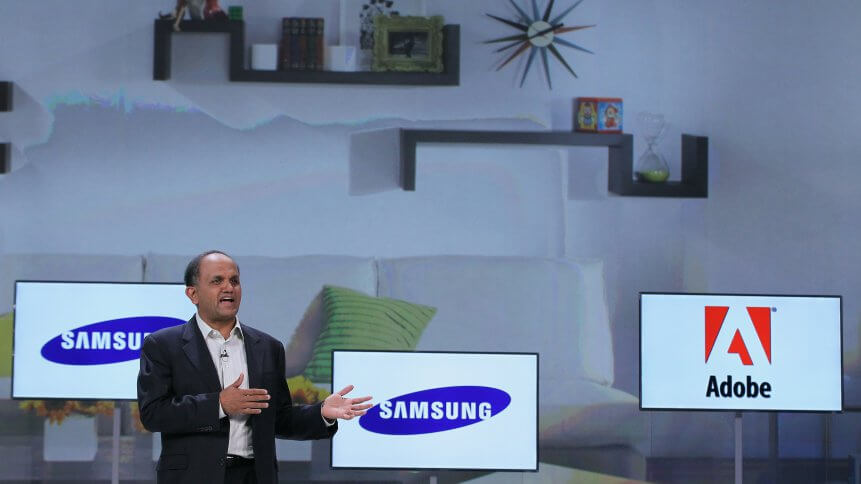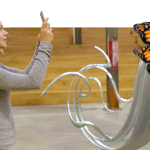Why businesses are developing multiexperience

The arrival of the iPhone App Store in 2008 created a digital app goldrush. Businesses dived headfirst into mobile app development and desperately tried to convince consumers to download their new branded apps.
The market quickly reached a saturation point, and app fatigue soon followed.
At the Adobe Summit back in 2016, CEO Shantanu Narayen declared that it was time to change the world through digital experiences.
Brands were tasked with meeting the rising expectations of their users across an increasing number of digital touchpoints. Creative teams continued to work in parallel to transform web and mobile development.
But in a mobile-first digital world, the market demanded something different, and the arrival of progressive web apps provided a much-needed refresh to the industry.
But, how far have we progressed since Narayen’s keynote?
The multiexperience challenge
Reaching privacy-aware consumers on the right device, and at the right time, without appearing creepy or intrusive has been a tough balance for many to achieve.
Investing in the right technology and delivering a measurable outcome and return on their investment has also piled on the pressure.
Several years later, businesses of all sizes are still trying to understand how people interact with and experience digital technology. There is no shortage of contrasting opinions to be found online, but one thing that everyone can agree on is that we need to think bigger than traditional mobile applications.
Last month, Gartner featured “Multiexperience” as one of its top ten strategic technology trends for businesses in 2020.
A unified user experience (UX) has become the new destination, and it requires a different school of thought. Gartner predicts that this change will see companies begin to “replace technology-literate people with people-literate technology.”
“Rather than building a technology stack and then exploring the potential applications, organizations must consider the business and human context first.” – Brian Burke
Thinker bigger than your mobile app
Our interaction with technology has evolved far beyond a single interaction with a computer. The increasingly complex digital customer journey is beginning to include multisensory and multi-touchpoint interfaces.
A combination of consumers embracing wearables and the rise of IoT sensors will also create new opportunities and challenges in equal measure.
A multiexperience strategy at the heart of a brand’s digital transformation efforts is already becoming mission critical. The challenge is to create a consistent UX across smartphones and wearable devices. But conversational and immersive digital touchpoints are beginning to enter the frame too.
Predictably, application development is going multiexperience to evolve with the way people are now engaging with businesses, individuals, and systems. These changes are reinventing the way applications are being built across the digital landscape to accommodate interactions via touch, voice, and gesture.
Multiexperience development platforms (MXDP) such as Mendix, Outsystems, and Kony are helping businesses create low code user experiences.
But the umbrella term covers every element of the lifecycle from design, development, testing, distributing, managing, and analyzing across a growing portfolio of next-gen apps.
YOU MIGHT LIKE

Adobe readies to launch no-code AR tools for businesses
Where do we go from here?
The unavoidable tech buzzwords over the last few years will begin to enter the mainstream.
The arrival of 5G will make it much easier to deliver immersive experiences using augmented reality (AR), virtual (VR), and mixed reality. But it’s the moment where all these technologies converge that things begin to get exciting.
Gartner believes it will pave the way for more ambient user experiences where the emerging technologies of today will be used for an AR overlay or fully immersive VR experience. The most important thing to remember is that it will be consumers driving technological change with their continuously increasing expectations rather than businesses.
Consumers already expect a blend of digital and physical experiences from brands. They also want to seamlessly drift from multiple digital touchpoints without running into pain points. It’s businesses that rise to this challenge that will thrive in a digital age where so many have failed.
However, it’s not about replacing people with tech. Businesses that succeed will have humans and machines working alongside each other to leverage the best of both worlds. But let’s not get too carried away with crystal ball gazing just yet.
Every business is faced with the task of providing the wow factor to mobile customers across multiple digital touchpoints by creating exceptional experiences. Achieving that goal in 2020 and beyond will require a new multiexperience strategy.
We can expect low-code MXDP solutions to continue to dominate the multiexperience space and the creation of fit-for-purpose apps across a plethora of devices. But the biggest change is the technology that surrounds us is beginning to understand people, rather than the other way around.








